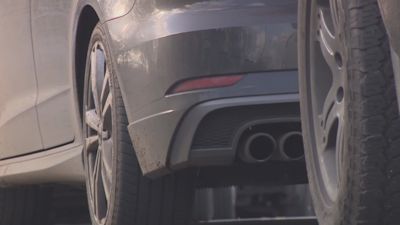'Urgent action needed' as air pollution levels continue to rise in Oxford

Air pollution levels are rising in Oxford according to new research. There was a significant drop in emissions in 2020 because of the pandemic, but the city council has revealed levels are increasing again, although they're still lower than before the pandemic started.
The council says the figures highlight the need to take urgent action to prevent a return to previous levels - and that the number of cars on Oxford's roads needs to be reduced.
The new data shows a 14% increase in air pollution levels on 2020 levels, largely due to the easing of coronavirus lockdown measures and increasing traffic across the city. Levels are still 17% below 2019 pre-pandemic levels.
Before the pandemic, air pollution levels in the city were plateauing after a significant drop due to the introduction of the Low Emission Zone for buses in 2013.
The city council says the number of cars on the road need to be reduced and more people encouraged to use electric vehicles.
Air pollution is a major cause of premature death and disease, and is considered the single largest environmental health risk in Europe.
A January 2020 study from Centre for Cities found out that at least one in 17 deaths in Oxford is related to air pollution. Air pollution has been found to particularly impact the most vulnerable members of our community, such as those from minority backgrounds, the young, old and those experiencing health issues.
Last year, a new Air Quality Action Plan was launched for the city which sets its own target for 30 µg/m3 of NO2 to be achieved, by 2025 at the latest.
Councillor Imogen Thomas, Cabinet Member for Zero Carbon Oxford and Climate Justice, Oxford City Council said: “Air pollution impacts everyone in society, but it can be especially harmful to the most vulnerable members of our community, including people from minority backgrounds, children, the elderly, and those already experiencing health issues.
“Last year the Council approved a new Air Quality Action Plan for Oxford and set out our own voluntary target for 30 µg/m3 of NO2 to be achieved, by 2025 at the latest, but there is no safe level of air pollution. We need to continue to take action to reduce air pollution in our city and clean up our air so nobody is breathing polluted air.”
Councillor Louise Upton, Cabinet Member for Health and Transport, Oxford City Council said: “Transport emissions accounts for 68% of NOx emissions in the Oxford, and in 2021 we saw a 14% increase in air pollution levels compared with 2020 levels due to the easing of coronavirus measures and a rise in traffic across the city.#
"While this is lower than pre-pandemic levels, we still need to take urgent action to ensure it does not return to previous levels which were damaging to everyone’s health. In order to do this we need to reduce the number of cars on our road and encourage the switch to electric vehicles, travelling by public transport, or walking and cycling wherever possible.”